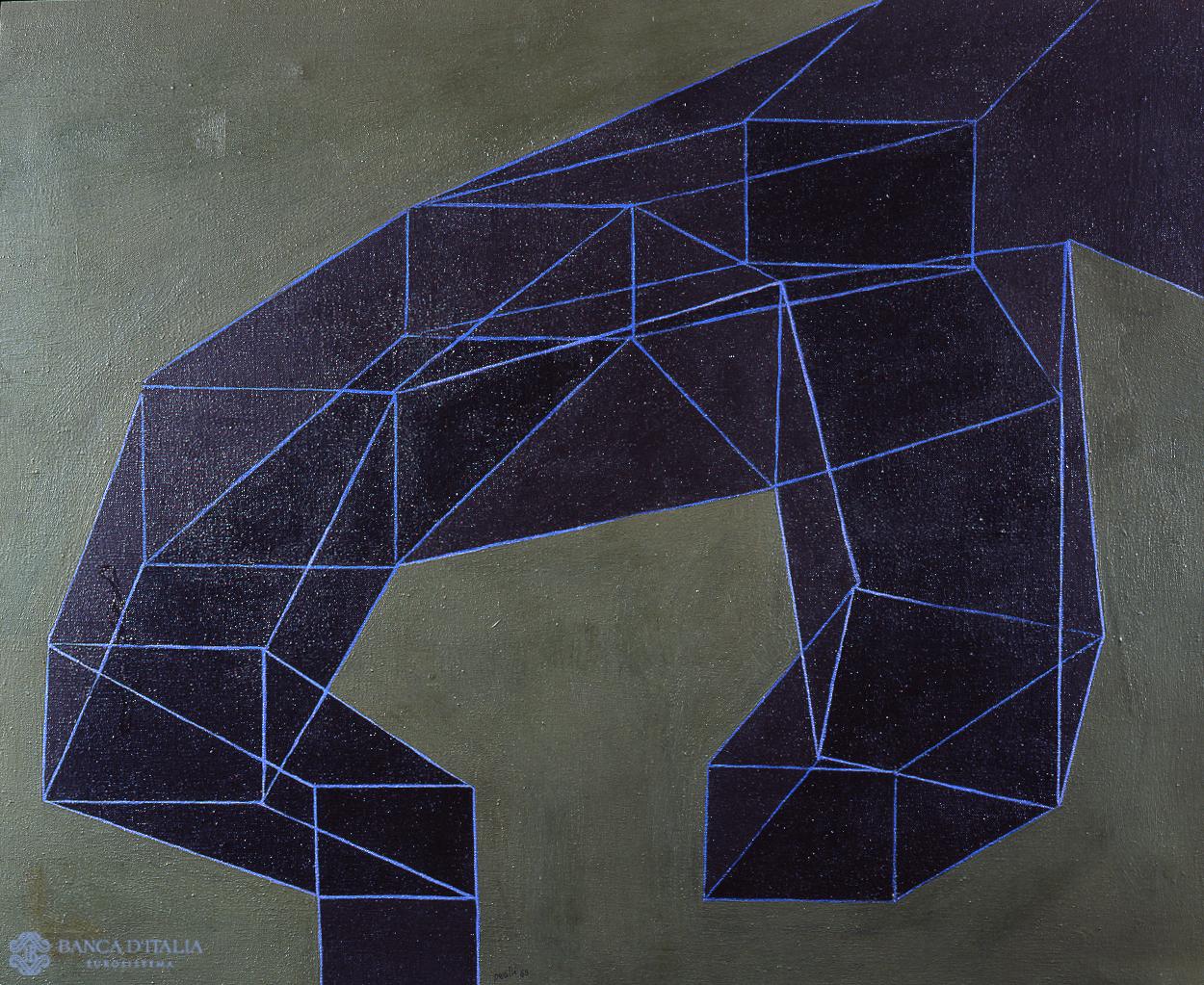A large, dark form, composed of the interlocking of numerous irregular polygons, extends across the canvas surface; untouched by shadows and therefore lacking any depth of its own, it appears to tumble forward, apprehensively, from above to below. Perilli later said of this work – with precisely the attitude of self-mockery that was his faithful lifelong companion – that it was an image of “an abstraction descending to the lower planes”: from those algid, inaccessible planes in which a long tradition of contemporary art had accustomed him to being.
At the end of the 1960s Perilli had just completed an illustrious chapter in his artistic career, when he formulated within his “comics”, as they were called, a possible coexistence between the tension towards the image that New Dada and pop art were introducing to Europe from America and his indomitable abstract vocation. His paintings were among the first to utilize a strange, distorted geometry, flat planes within which were inserted the improbable adventures of an amused and disorienting imagery. Soon, in fact, and in any case by the end of the decade, geometry, its paradoxes and its hyperboles, would constitute the image without the support of the interrupted story of the “comics”.
Achille Perilli , La civetteria dell’astrazione
La civetteria dell’astrazione
20th century AD
Painting
Abstract

Artist
Date
1968
Material and technique
Mixed technique on canvas
Measurements
81 x 100 cm
Compiler
Fabrizio D'Amico
